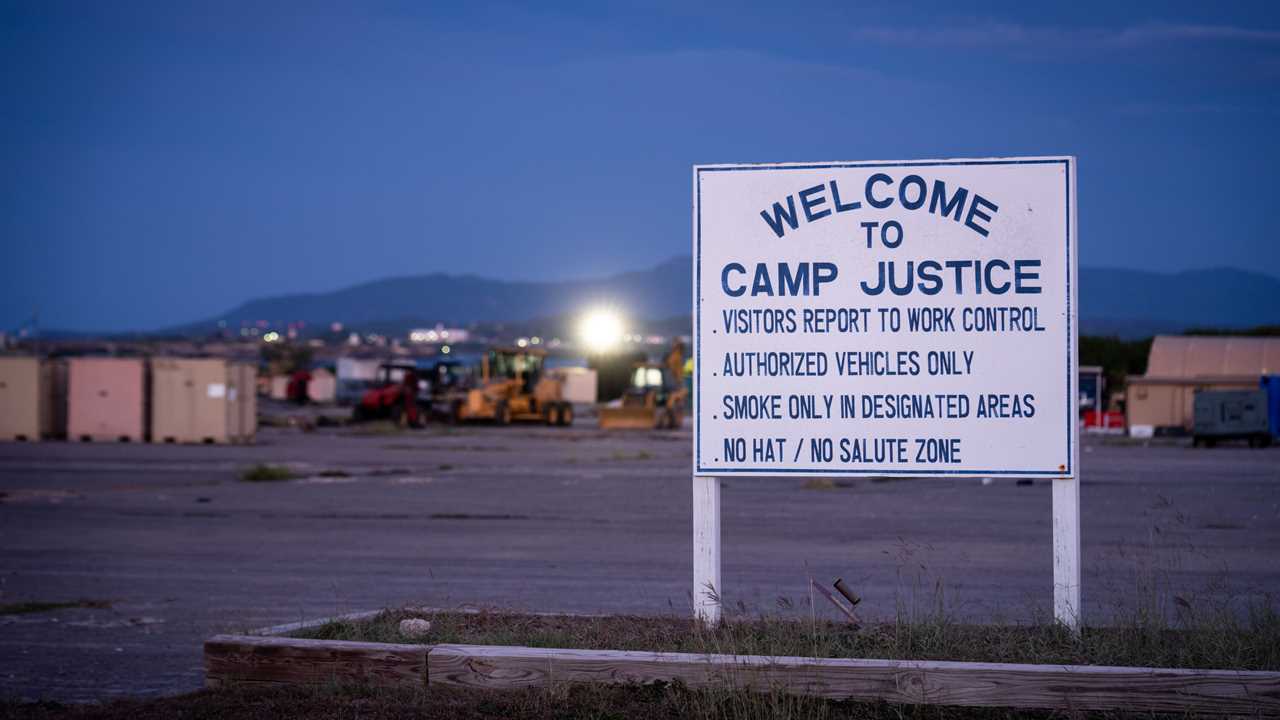
GUANTÁNAMO BAY, Cuba — Criminal investigators at Guantánamo Bay waited nearly three months before obtaining DNA samples and fingerprints from the accused plotters of the attacks on Sept. 11, 2001, and the U.S.S. Cole, it was disclosed this week, further deepening the mystery of who was responsible for the prisoners in their earliest days here.The question of who was in charge — the C.I.A. or the U.S. military — is key to defense lawyers’ efforts to exclude potential evidence from two death-penalty cases at Guantánamo. The lawyers have argued that years of C.I.A. detention and torture of the prisoners have tainted the evidence.The issue of responsibility for the prisoners is so sensitive that national security censors recently redacted a statement made in court by a defense lawyer for Khalid Shaikh Mohammed, who is accused of plotting the Sept. 11 attacks. Rita J. Radostitz, the lawyer, told the court on Nov. 19 that in the months after the detainees’ transfer to the military prison zone, their guards were working for the C.I.A., not the Defense Department. Prosecutors did not protest at the time, and no one used the mute button to block audio of classified information. But the comment was later blacked out from the public transcript of the proceedings.In the Sept. 11 case, lawyers are in the midst of many months of witness testimony to help the trial judge determine whether in early 2007, after years in C.I.A. custody, Mr. Mohammed and other defendants freely described to F.B.I. interrogators their roles in the Sept. 11 attacks. Prosecutors call the testimony key trial evidence; defense lawyers say the prisoners told the agents what the C.I.A. had groomed them to say through torture and years of isolation at secret detention facilities known as black sites.Lawyers for Abd al-Rahim al-Nashiri, a Saudi prisoner who is accused of planning Al Qaeda’s suicide bombing of the U.S.S. Cole in Aden harbor in Yemen in October 2000, also consider his interrogation by the F.B.I. in 2007 to be involuntary.Mr. Nashiri is one of three prisoners the C.I.A. has confirmed it waterboarded to obtain information after his arrest in Dubai in October 2002. Between 2002 and 2006, he was held in a series of secret C.I.A.-run prisons overseas, including a black site at Guantánamo Bay. The Guantánamo site, called Echo II, operated in 2003 and 2004. C.I.A. guards there dressed as soldiers, and F.B.I. agents interrogated detainees there in 2007.Mr. Nashiri’s lawyers have been calling witnesses this month in an effort to persuade the judge to exclude a piece of key trial evidence in that case: a swab of Mr. Nashiri’s cheek taken at Guantánamo that partly matched a DNA sample taken from a site in Aden, Yemen, that was an observation point for the U.S.S. Cole bombing, which killed 17 U.S. sailors.Defense lawyers argue that Mr. Nashiri was in his fourth year of U.S. custody and that under the Fourth Amendment, the law enforcement authorities needed to obtain a warrant from a military or federal court to take the cheek swab and other samples. The judge, Col. Lanny J. Acosta Jr., agreed to hear the argument even as a higher court was considering whether a prisoner at Guantánamo Bay is entitled to due process rights guaranteed by the Constitution.In court on Monday, Mark A. Miller, a prosecutor, called the collection of the samples on Nov. 30, 2006 — more than 80 days after the detainees were brought to Guantánamo — “pursuant to a standard protocol” for a person “coming into a prisoner of war facility” or a “law of war facility.”No explanation was offered for the delay, although the detainee processing took place after President George W. Bush announced on Sept. 6, 2006, that the prisoners were at Guantánamo. One reason for the disclosure, he said, was that “to start the process for bringing them to trial, we must bring them into the open.” Mr. Nashiri was arraigned in 2011, and the case has been repeatedly stalled through higher court challenges.Several law enforcement agents on Monday described how, during their assignment to the Criminal Investigation Task Force, a prosecution support organization created by the Defense Department, they undertook the collection process on Nov. 30, 2006, in their first encounter with the former C.I.A. detainees. The agents operated what Mr. Miller called an “assembly line” to photograph, fingerprint and take DNA samples of each of the 14 prisoners, who were shackled at the wrists and ankles and guided through the process by two guards.None of the men protested, complained or mentioned mistreatment, said Chief Warrant Officer Leona Mansapit of the Army. A military police soldier at the time, she took fingerprints from some of the prisoners. “It was very routine,” she said, aside from the late hour.An investigator who tookBy: Carol Rosenberg
Title: U.S. Waited Months to Book C.I.A. Prisoners at Guantánamo Bay
Sourced From: www.nytimes.com/2021/12/15/us/politics/guantanamo-bay-cia-prisoners.html
Published Date: Wed, 15 Dec 2021 18:59:32 +0000
Read More
Did you miss our previous article...
https://badpoliticians.com/us-politics/biden-taps-michelle-kwan-caroline-kennedy-for-ambassador-posts
 UK PoliticsWorld PoliticsVideosPrivacy PolicyTerms And Conditions
UK PoliticsWorld PoliticsVideosPrivacy PolicyTerms And Conditions
